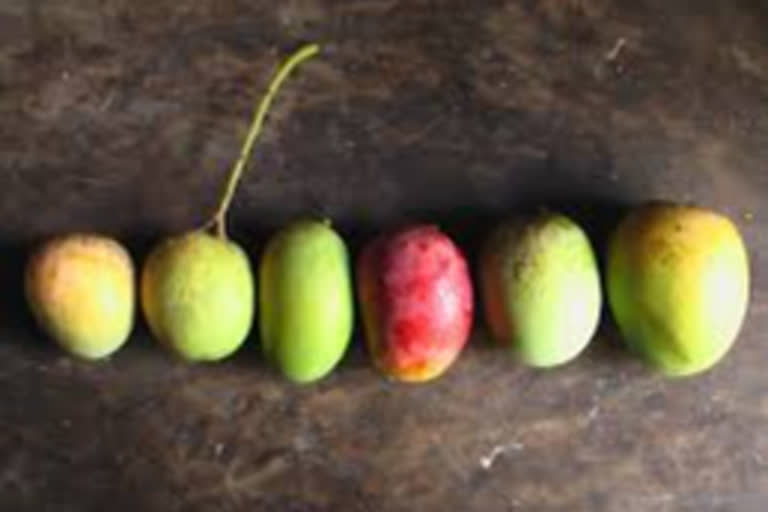Lucknow (Uttar Pradesh): With the Malihabadi Dashehari mango getting the GI tag more than a decade ago, the city-based Central Institute for Subtropical Horticulture has now initiated the process for obtaining Geographical Indication tag for Gaurjit, Banarsi Langrha, Chausa and Rataul mango varieties.
Once the varieties get the GI tag, producers of these mangoes are likely to fetch a good price and farmers of other regions cannot market their fruits by misusing the name.
"After significantly contributing for the GI tag for Malihabadi Dashehari, Central Institute for Subtropical Horticulture (CISH), in collaboration with the Mandi Parishad of Uttar Pradesh has initiated the process for obtaining GI tag for Gaurjit, Banarsi Langrha, Chausa and Rataul. GI tag for Langrha and Chausa will help in developing a good market for these special mangoes from Uttar Pradesh.
"It will also be possible to get a good price for the producers of these mangoes by getting a special geographical identity and other producers cannot market their fruits by misusing the name," Shailendra Rajan, director, ICAR-Central Institute for Subtropical Horticulture, Lucknow said in a statement.
Malihabadi Dashehari mango got the GI tag in September 2009.
Many Indian mangoes have GI tags. Alphonso of Ratnagiri, Kesar of Gir (Gujarat) and Marathwada, Bangnapalli in Andhra Pradesh, Zardalu of Bhagalpur, Appamidi of Karnataka, Himsagar of Malda (West Bengal), Laxman Bhog and Fazli, among others, have attained this distinction, he said.
Also read: Amid Ladakh tension, threat of China-Pak-North Korea cyber attack looms large
Nearly all mango growers in the geographical area selected for the GI benefit from this step.
"Due to climate and special geographical reasons, it is easy to produce good quality mangoes. Dashehari being produced in other states cannot be compared to Dashehari of Malihabad at all due to the size, weight, sweetness and colour of fruits in GI the area notified. This is the reason that sellers in various markets abroad try to entice buyers in the name of Malihabadi Dashehari," Rajan said.
Geographical Indications (GIs) are used for products that have a specific place of origin. The distinctive features and reputation of these products are due to their origin from a region.
"The indicator ensures product quality and origin of production. Geographical indications tag or geographical indicator means that no person, institution or government can use the famous name of this product other than an authorized user.
"In India, the Geographical Indication (Registration and Protection) Act, 1999 came into effect from September 2003. So far, 370 items have been registered as 'Geographical' (GI) products under 'Agriculture', 'Handicrafts', 'Manufactured', 'Food items' and 'Natural items'," Rajan said.
Generally, after certification, farmers will have to face less competition during marketing.
"GI tag can also be considered as a standard of quality in many ways. There is still a need for awareness campaigns for GI products in India so that farmers can get benefits. Fruits with a GI tag may get priority in e-marketing," the CISH director said.
PTI Report



